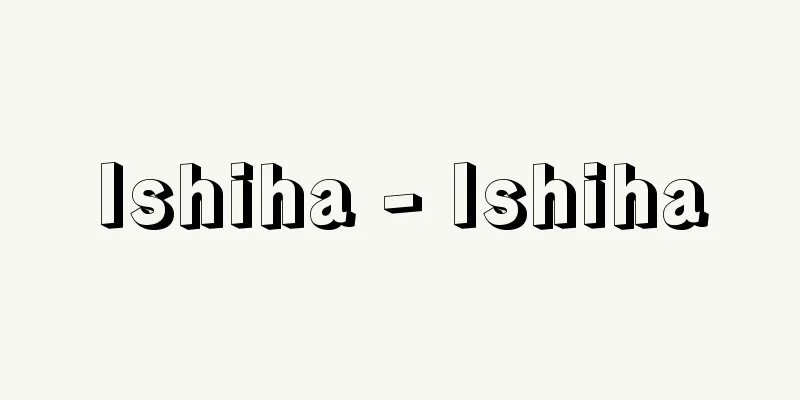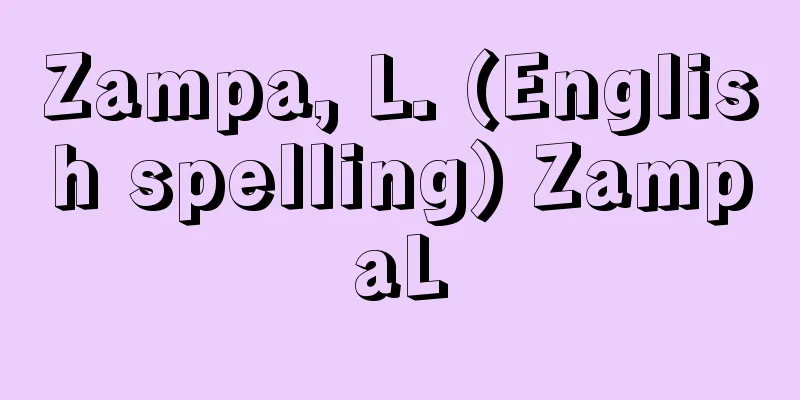Monument - Hiketsu

|
A type of carved stone that originated in China. It refers to a "stone monument" carved into stone to commemorate a person's achievements and leave a legacy for future generations. A monument is a square slab of carved stone with a set shape, while a jie is a carved stone that does not have the shape of a monument, and is often circular or similar to natural stone, but in a broader sense, it also refers to cliff carvings, statues, titles, and grave inscriptions, and is sometimes collectively called a monument or monument jie. Jie appear before monuments, during the Warring States and Qin dynasty, and the "Shigu" from the end of the Warring States period and the carved stone of Qin Shi Huang are types of jie. The origin of the monument is not known for certain. According to historical documents, there are three theories: (1) they were erected inside the gates of ancestral temples to tie up sacrifices, (2) they were erected next to graves to lower coffins, and (3) they were sundials erected in palaces or schools to measure the sun's shadow. It is said that inscriptions on monuments began to be inscribed during the Han dynasty, and the oldest surviving monument is thought to be the "Dunhuang Grand Prefect Pei Cen Jigong Monument" from 137 (Yonghe 2), followed by the "Beihai Xiangjingjun Monument" from the Later Han dynasty (143). There are two types of Han dynasty monuments: those with a triangular neck (keishu or senshu) and those with a round neck (enshu). The top of the monument has a hole called a sen, and the monument stands on a square base called a houfu. The top of the monument usually has an inscription written in seal script (tensho). A round-neck monument has three rainbow-shaped grooves carved into the top, called un. The un are remnants of holes where the sacrifice was tied or holes through which the shaft of a pulley was passed when the coffin was lowered, and the un are thought to trace the shape of the rope that slid the pulley, but the details of both are unknown. The names of the people who contributed to the cost of erecting the monument are often inscribed on the back of the monument (hikage). From the end of the Han dynasty through the Wei and Jin dynasties, erecting monuments was prohibited as part of a crackdown on lavish funerals, but by the time of the Northern and Southern Dynasties, the round-headed style disappeared and incisions were rarely seen. The circular-headed rim was also replaced by a pair of water-shaped dragons called chishu, and the base stone had a turtle-shaped pedestal. During the Tang dynasty, monuments became increasingly popular, with huge monuments being built and the sides and bases of the monuments being decorated with elegant and intricate reliefs, and from the Song and Yuan dynasties onwards, monuments with chishu-headed turtle pedestals became the norm. The characters on monuments are the most solemn and formal style of writing in each era in China and are a fundamental source of calligraphy, but the texts themselves are also important foundational sources for history, literature and classical Chinese studies. [Shigenori Tsutsui] Source: Shogakukan Encyclopedia Nipponica About Encyclopedia Nipponica Information | Legend |
|
中国に起源する刻石の一種。人の事績を顕彰し、後世に残すために石に刻して立てた「いしぶみ」をいう。碑は一定の形制を備えた方形板状の刻石をいい、碣は碑形をなさない刻石で、円形や自然石に近いものをいうことが多いが、広義にはこのほか摩崖(まがい)、造像、題名、墓誌などを総称して碑といい、また碑碣と総称することもある。碣の出現は碑よりも先行し、戦国・秦(しん)時代とみられ、戦国末期の『石鼓』や秦の始皇帝の刻石などは碣の類である。 碑の起源については、確かなことは知られていない。文献によれば、〔1〕宗廟(びょう)の門内に立てて犠牲(いけにえ)をつなぐもの、〔2〕墓穴のわきに立てて棺(ひつぎ)を下ろすのに使う柱、〔3〕宮中や学校に立てて日影を測る日時計、の3説があるが、碑に文章を刻するようになったのは漢代になってからといわれ、現存するもっとも古い碑と考えられているのは137年(永和2)の『敦煌太守裴岑紀功(とんこうたいしゅはいしんきこう)碑』で、後漢(ごかん)の『北海相景君碑』(143)がこれに次ぐ。漢碑(かんぴ)の形制は、碑身の首部(碑首)が三角形のもの(圭首(けいしゅ)または尖首(せんしゅ))と円いもの(円首)の2種があり、碑身の上部には穿(せん)とよぶ孔(あな)があって、碑身は方趺(ほうふ)という方形の台石の上に立っている。碑首には篆書(てんしょ)で書かれた題字(篆額)があるのが普通である。円首の碑には、碑首に三筋ほどの虹(にじ)形の溝が彫ってあり、これを暈(うん)とよぶ。穿は犠牲をつないだ孔、あるいは棺を下ろすときに滑車の軸を通した孔の名残(なごり)で、暈は滑車を滑る縄の形をなぞったものと推測されているが、いずれも詳細は不明である。碑の裏面(碑陰)には、立碑の際に費用を出し合った人々の名を刻することが多い。 漢末から魏晋(ぎしん)にかけ、厚葬の取締りに伴い立碑は禁じられたが、南北朝時代になると圭首はなくなり、穿もほとんどみられなくなる。また、円首の暈も一対の螭(みずち)という竜に変わって、これを螭首(ちしゅ)といい、台石は亀(かめ)の形をかたどった亀趺(きふ)が現れる。唐代には碑はますます盛んとなり、巨大なものがつくられるとともに、碑側や方趺に豊麗細密な浮彫りが施され、宋元(そうげん)以降は螭首亀趺の碑が典型とされた。碑の文字は中国の各時代にもっとも荘重に書かれた正式書体であり、書学の根本資料であるが、またその文章も歴史学、文学、経学などの重要な基礎資料である。 [筒井茂徳] 出典 小学館 日本大百科全書(ニッポニカ)日本大百科全書(ニッポニカ)について 情報 | 凡例 |
<<: Picketing - Picketing (English spelling)
Recommend
Royal Naval College
… In other countries, the US Naval War College (f...
Mikkabi [town] - Mikkabi
A former town in Inasa County in the southwest of ...
Pēneios (English spelling)
…Her name means “laurel tree.” She was the daught...
Hatoyama [town] - Hatoyama
A town in Hiki County in the mid-west of Saitama P...
ad hoc
...Also, when a certain hypothesis encounters an ...
Omigawa [town] - Omigawa
A former town in Katori County, northeastern Chiba...
Pietro Locatelli
1695‐1764 An Italian violinist and composer of the...
Corporate Reorganization Law - Kaishakouseiho
This law provides for the reorganization procedur...
Benzol
...The chemical formula is C 6 H 6 . It is also c...
Joseph Achille Le Bel
1847‐1930 French chemist. Born in Pécherbronn, Als...
Ichihashi Nagakatsu
1557-1620 Oda-Toyotomi - A military commander and...
Ichneumia albicauda (English spelling)
… Most species are terrestrial, but some are adep...
Innosho - Innosho
…The basis for the character of Kojima Takanori w...
North side diagonal line - Kitagawa Shasen
Among the building height restrictions set forth i...
Weisiki - Whisky
…(7) Others This category mainly includes alcohol...









